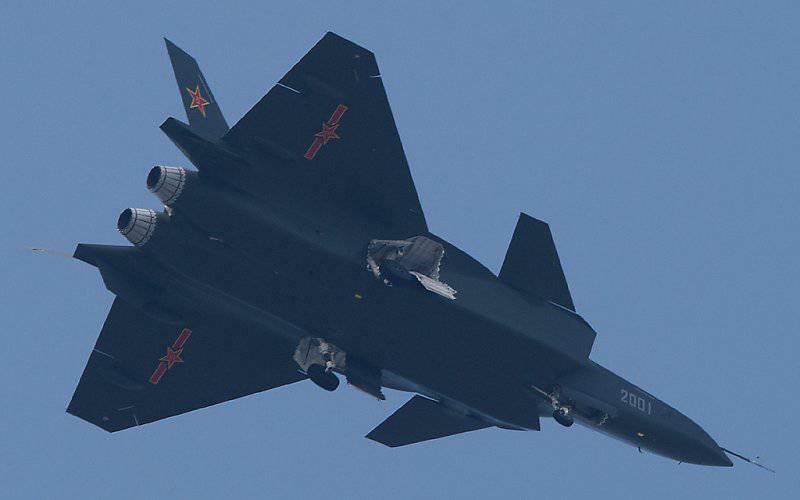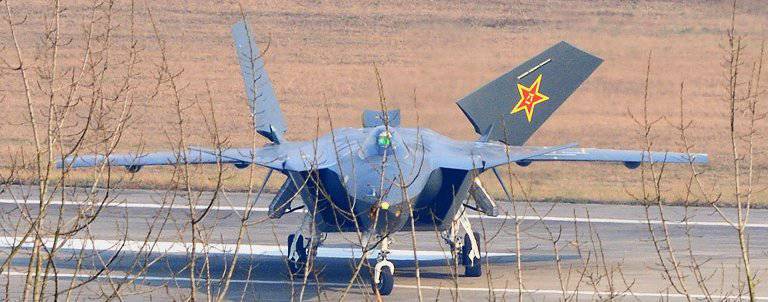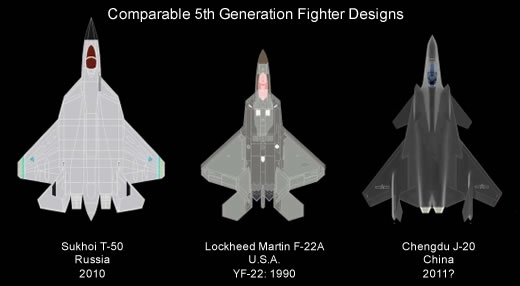giant panda
FULL MEMBER

- Joined
- Aug 4, 2012
- Messages
- 189
- Reaction score
- 0
The J-20, China's fifth-generation stealth fighter, is able to penetrate US air defense systems, according to a report from Russia's Military Analysis.
The report said that the stealth technology used by the J-20 is very similar to that used by the American F-22A. Its stealth capability is far better than the F-35 and even the Russian-built PAK FA fighter, it said. Considered a fighter-bomber similar to the US F-111 of the Cold War ear, the J-20's range would enable it to reach the Pacific second island chain of the Philippines and Guam. With mid-air refueling it could be extended further.
The J-20 already boasts better aerodynamic performance than the F-35, F-18A and F-18E/F currently used by the various branches of the US armed forces. The report said that between 400 and 500 J-20 aircraft will be produced to replace the Su-27SK and Su-33MKK currently deployed by the PLA Air Force.
russian link: ÐÑедваÑиÑелÑÐ½Ð°Ñ Ð¾Ñенка пÑоÑоÑипа малозамеÑного киÑайÑкого иÑÑÑебиÑÐµÐ»Ñ Chengdu J-XX [J-20] » Ðоенное обозÑение
Технические замечания по конструкции прототипа
J-XX/J-20 является тяжелым истребителем, сравнимым по размерам с F-111. Первый образец обладает большим треугольным крылом по схеме "утка" с положительным углом поперечного ВЭ, с парой наклоненного наружу/назад поворотного вертикального/горизонтального хвостового оперения и парой похожих больших скошенных передних поворотных закрылков, которые если останутся на серийном самолете то наряду с хвостовым оперением обеспечат самолету весьма продвинутые возможности в области управляемости и маневренности. Несомненно, что такая конфигурация предназначена для обеспечения хорошей устойчивости на сверхзвуковом режиме с подходящим типом двигателя, а также обеспечит хорошие маневренные характеристики на транс-и сверхзвуковых режимах.
Без сомнения форма малозаметности значительно лучше, чем на российском прототипе Т-50 ПАК ФА и тем более лучше чем на запускаемом в производство F-35 Joint Strike Fighter.
Конструкция J-XX/J-20 по-видимому в значительной степени была основана на правилах формирования малозаметности F-22A Raptor:
Носовая секция китайского J-XX/J-20 и форма фонаря близки по внешнему виду к F-22, обеспечивая схожую сигнатуру уже проверенной конструкции.
Трапециевидные кромки воздухозаборников двигателей J-XX/J-20 похожи на F-22, хотя и кажутся большими и напоминающими стиль DSI (Diverterless Supersonic Inlet) F-35, очевидно направленные ​​на уменьшение заметности кромок воздухозаборников стиля F-22.
Имеющая решающее значение для малозаметности форма крепления крыльев к фюзеляжу J-XX/J-20 очень похожа на F-22 и явно превосходит российский прототип Т-50 ПАК ФА и американский истребитель F -35 Joint Strike.(english The report said that the stealth technology used by the J-20 is very similar to that used by the American F-22A.Its stealth capability is far better than the F-35 and even the Russian-built PAK FA fighter,)
Плоская нижняя часть фюзеляжа J-XX/J-20 является оптимальной для всех аспектов широкополосной малозаметности и тесно имитирует дизайн F-22.
Форма крыла в плане J-XX/J-20 показывает точное угловое выравнивание между передней кромкой горизонтального оперения и пеpедней кpомкой крыла и точное пересеченное угловое выравнивание края между задней кромкой горизонтального оперения и задней кpомкой крыла. Стреловидность передней кромки крыла составляет ~ 43°, что явно предназначено для эффективного сверхзвукового полета.
При создании носовых и основных створок шасси J-XX/J-20 использовалась оптимизированная для Х-диапазона зубчатая технология кромки, основанная на конструкции F-117A и F-22.
Кормовая часть фюзеляжа, хвостовые балки, стабилизаторы/ ребра, асимметричные сопла, не совместимых с эффективной малозаметностью, но могут служить лишь промежуточным решением для ускорения летных испытаний прототипа.
Конфигурация планера и формы кормы фюзеляжа соответствует стилю конструкции сопла с изменяемым вектором тяги F-22A или прямоугольного сопла предназначенного для контролируемой модели инфракрасного излучения и радиочастотной скрытности.
Конфигурация планера совместима с подфизюляжным, подкрыльным и размещением оружия во внутренних отсеках и является достаточно большой, чтобы соответствовать или в той или иной степени превосходить внутреннюю полезную нагрузку F-22A Raptor.
Объем размещаемого внутри самолета топлива также может оказаться высоким учитывая конфигурацию фюзеляжа и большие внутренние объемы треугольных крылев. Это свидетельствует о намерении обеспечить возможности устойчивого сверхзвукового крейсерского полета.
Китайцы не раскрывают тип двигателя. Существует мнение, что используются российские сверхзвуковые двигатели серии 117С, хотя с учетом общей эффективности аэродинамики самолета, их, скорее всего, будет недостаточно чтобы использовать весь потенциал этого современного планера.
Набор внутренних датчиков остается неизвестен. Китай до сих пор не продемонстрировал радар АФАР или продвинутую систему определения местоположения излучающих РЭС. Тем не менее, они могут стать доступны к моменту поступления планера на производство. Соответствующее российское оборудование в настоящее время находится на стадии разработки и/ или испытаний.


The report said that the stealth technology used by the J-20 is very similar to that used by the American F-22A. Its stealth capability is far better than the F-35 and even the Russian-built PAK FA fighter, it said. Considered a fighter-bomber similar to the US F-111 of the Cold War ear, the J-20's range would enable it to reach the Pacific second island chain of the Philippines and Guam. With mid-air refueling it could be extended further.
The J-20 already boasts better aerodynamic performance than the F-35, F-18A and F-18E/F currently used by the various branches of the US armed forces. The report said that between 400 and 500 J-20 aircraft will be produced to replace the Su-27SK and Su-33MKK currently deployed by the PLA Air Force.
russian link: ÐÑедваÑиÑелÑÐ½Ð°Ñ Ð¾Ñенка пÑоÑоÑипа малозамеÑного киÑайÑкого иÑÑÑебиÑÐµÐ»Ñ Chengdu J-XX [J-20] » Ðоенное обозÑение
Технические замечания по конструкции прототипа
J-XX/J-20 является тяжелым истребителем, сравнимым по размерам с F-111. Первый образец обладает большим треугольным крылом по схеме "утка" с положительным углом поперечного ВЭ, с парой наклоненного наружу/назад поворотного вертикального/горизонтального хвостового оперения и парой похожих больших скошенных передних поворотных закрылков, которые если останутся на серийном самолете то наряду с хвостовым оперением обеспечат самолету весьма продвинутые возможности в области управляемости и маневренности. Несомненно, что такая конфигурация предназначена для обеспечения хорошей устойчивости на сверхзвуковом режиме с подходящим типом двигателя, а также обеспечит хорошие маневренные характеристики на транс-и сверхзвуковых режимах.
Без сомнения форма малозаметности значительно лучше, чем на российском прототипе Т-50 ПАК ФА и тем более лучше чем на запускаемом в производство F-35 Joint Strike Fighter.
Конструкция J-XX/J-20 по-видимому в значительной степени была основана на правилах формирования малозаметности F-22A Raptor:
Носовая секция китайского J-XX/J-20 и форма фонаря близки по внешнему виду к F-22, обеспечивая схожую сигнатуру уже проверенной конструкции.
Трапециевидные кромки воздухозаборников двигателей J-XX/J-20 похожи на F-22, хотя и кажутся большими и напоминающими стиль DSI (Diverterless Supersonic Inlet) F-35, очевидно направленные ​​на уменьшение заметности кромок воздухозаборников стиля F-22.
Имеющая решающее значение для малозаметности форма крепления крыльев к фюзеляжу J-XX/J-20 очень похожа на F-22 и явно превосходит российский прототип Т-50 ПАК ФА и американский истребитель F -35 Joint Strike.(english The report said that the stealth technology used by the J-20 is very similar to that used by the American F-22A.Its stealth capability is far better than the F-35 and even the Russian-built PAK FA fighter,)
Плоская нижняя часть фюзеляжа J-XX/J-20 является оптимальной для всех аспектов широкополосной малозаметности и тесно имитирует дизайн F-22.
Форма крыла в плане J-XX/J-20 показывает точное угловое выравнивание между передней кромкой горизонтального оперения и пеpедней кpомкой крыла и точное пересеченное угловое выравнивание края между задней кромкой горизонтального оперения и задней кpомкой крыла. Стреловидность передней кромки крыла составляет ~ 43°, что явно предназначено для эффективного сверхзвукового полета.
При создании носовых и основных створок шасси J-XX/J-20 использовалась оптимизированная для Х-диапазона зубчатая технология кромки, основанная на конструкции F-117A и F-22.
Кормовая часть фюзеляжа, хвостовые балки, стабилизаторы/ ребра, асимметричные сопла, не совместимых с эффективной малозаметностью, но могут служить лишь промежуточным решением для ускорения летных испытаний прототипа.
Конфигурация планера и формы кормы фюзеляжа соответствует стилю конструкции сопла с изменяемым вектором тяги F-22A или прямоугольного сопла предназначенного для контролируемой модели инфракрасного излучения и радиочастотной скрытности.
Конфигурация планера совместима с подфизюляжным, подкрыльным и размещением оружия во внутренних отсеках и является достаточно большой, чтобы соответствовать или в той или иной степени превосходить внутреннюю полезную нагрузку F-22A Raptor.
Объем размещаемого внутри самолета топлива также может оказаться высоким учитывая конфигурацию фюзеляжа и большие внутренние объемы треугольных крылев. Это свидетельствует о намерении обеспечить возможности устойчивого сверхзвукового крейсерского полета.
Китайцы не раскрывают тип двигателя. Существует мнение, что используются российские сверхзвуковые двигатели серии 117С, хотя с учетом общей эффективности аэродинамики самолета, их, скорее всего, будет недостаточно чтобы использовать весь потенциал этого современного планера.
Набор внутренних датчиков остается неизвестен. Китай до сих пор не продемонстрировал радар АФАР или продвинутую систему определения местоположения излучающих РЭС. Тем не менее, они могут стать доступны к моменту поступления планера на производство. Соответствующее российское оборудование в настоящее время находится на стадии разработки и/ или испытаний.

















